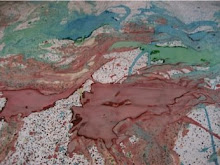The highlights of the evening were the honorees: Alison Boswell, Charlly Bun, Atasha Clay, Jessica Cruz, Emanuel Essell Jr., Kie Fugii, Giovanna “Gigi” Gisom, Christy Levine, Aaron Lo, Ana Revolorio Crespo, and Bria Swenson. I had the opportunity to speak with them and have included summaries of the interviews that I conducted:
Alison Boswell (California Children’s Services) is an energetic community leader who was referred to the Youth Leadership Program by her California Children’s Services therapist. For two years, she’s been participating in monthly meetings of the Youth Leadership Program. Alison has also developed a power point presentation about how to go about hiring in-home support staff, and her advice includes asking applicants if they care about the job for which they’re applying. Another tip that Alison has is to make sure workers have a reliable means of transportation. With all the activism that Alison is involved with, she credits her organizational skills to the use of e-mail; developing a task list; and maintaining a calendar. She is also grateful for the family support she receives. Alison’s ambition is to become a disability activist.
Charlly Bun (Community Immersion Program) has been volunteering with a variety of community organizations since high school. Charlly has learned from his volunteer experience how to follow directions and to work with others as a team. He’s learned to cope with challenging situations by taking each task one step at a time and being patient.
Atasha Clay (Holy Names High School
Christy Levine (Bay Area Outreach and Recreation Program, BORP) is an amazing young woman who was able to push her chair up to the top of Vernal Falls
The Youth in Action Conference is a celebration of the drive and determination of today’s youth to make a difference within the disability community. The conference was well-attended and truly served to honor these young leaders of tomorrow. Award ceremonies like the Youth in Action Conference are necessary to recognize the achievements of a community that is often overlooked. This conference helps to improve the activism and morale of youth with disabilities, both increasing their visibility and demonstrating that their struggles can effect change.
